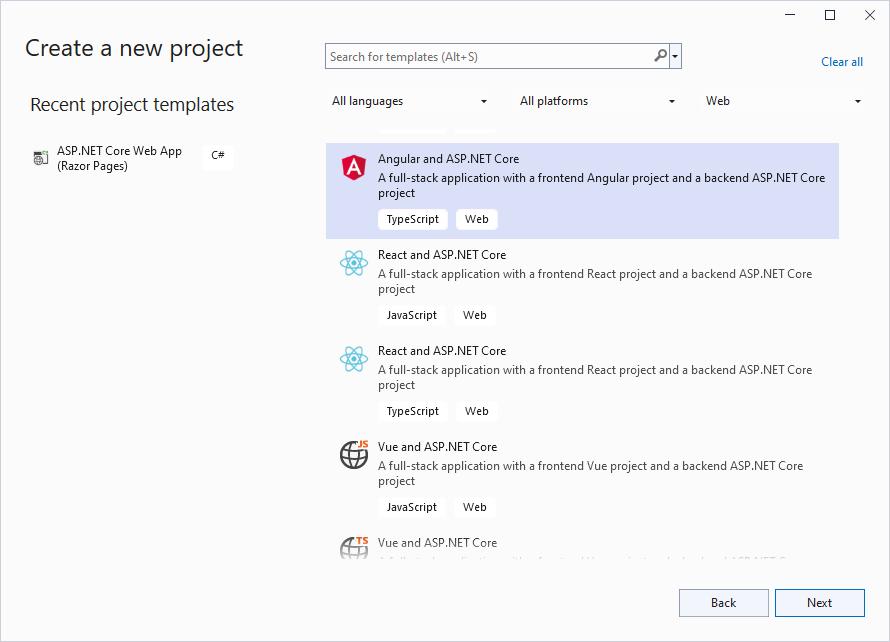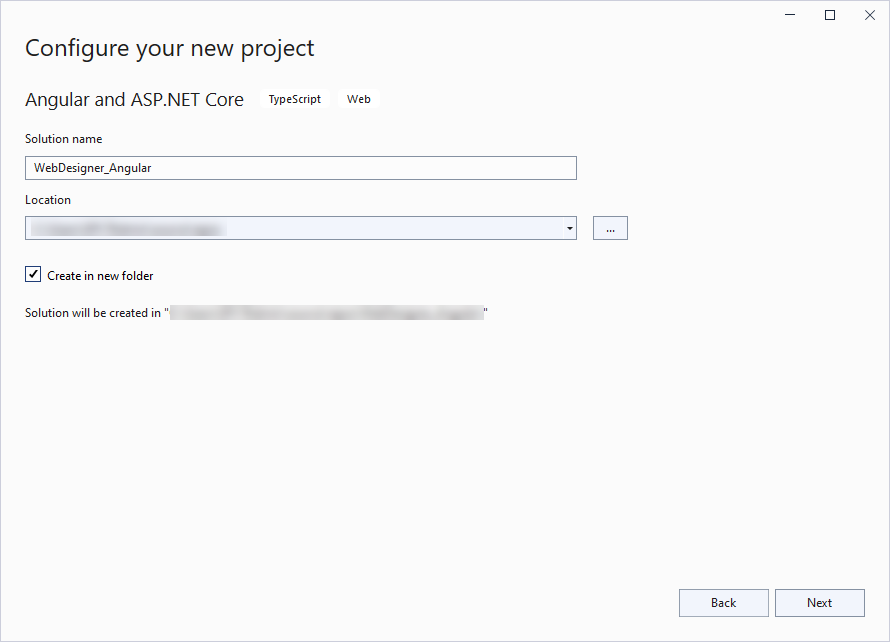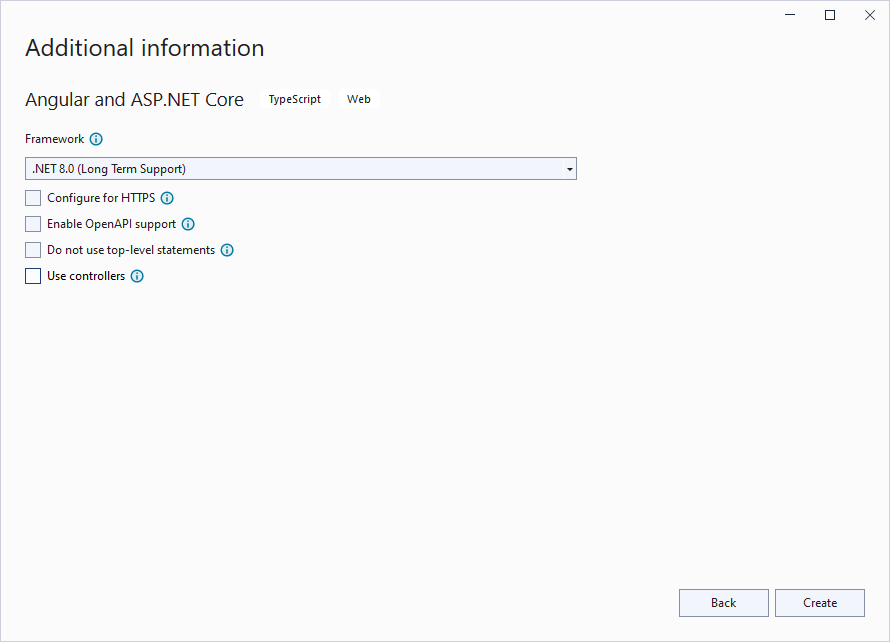- Introduction
- Report Readers
- Report Authors
- DevOps
-
Developers
- Quick Start
- Breaking Changes
- ActiveReports Version Compatibility and Migration
- License ActiveReports
- Configure ActiveReports Using Code
- Work with Reports using Code
- Report Parts
-
Create Designer and Viewer Applications
- .NET Viewer Application
- Web Viewer and Web Designer Middlewares
- Js Viewer Application
- ASP.NET WebViewer Application
- Blazor Viewer Application
- WebDesigner Application
- Blazor WebDesigner Application
- End User Report Designer in WinForms Application
- Themes in WebDesigner and Js Viewer Components
- Role Based Authorization with JWT
- Extensibility in ActiveReports
- External Customizations in ActiveReports
- Export Reports
- Print Reports
- Plugins Development
- Samples
- Troubleshooting
Integration to Angular Application
This page explains how you can embed the ActiveReports WebDesigner component in your Angular application. To run the Angular Application Server, you will require the node.js JavaScript runtime and Angular CLI. Use the following command in the terminal or command prompt to install the Angular CLI:
npm install -g @angular/cliOpen Microsoft Visual Studio 2022 and create a new Angular and ASP.NET Core project.

Type a name for your project and click Next.

Select the Framework to a latest version and uncheck other options.

Right-click the '.Server' project in the Solution Explorer and select Manage NuGet Packages.
Add the following packages to the project.
MESCIUS.ActiveReports.Aspnetcore.Designer MESCIUS.ActiveReports.Aspnetcore.ViewerCreate 'resources' folder in your sample project root; you can put your existing reports, themes, and images in this folder.
Make sure to set the Build Action property of the resources to 'Embedded Resource'.
Open 'Program.cs' file and update the file to include the 'using' statements at the top, and specify the resource folder and add services to container, so that the complete file looks like below.
using GrapeCity.ActiveReports.Aspnetcore.Designer; using GrapeCity.ActiveReports.Aspnetcore.Viewer; using GrapeCity.ActiveReports.Web.Designer; var builder = WebApplication.CreateBuilder(args); // Add services to the container. builder.Services.AddControllers(); builder.Services.AddReportViewer(); builder.Services.AddReportDesigner(); var app = builder.Build(); app.UseDefaultFiles(); app.UseStaticFiles(); // Configure the HTTP request pipeline. app.UseHttpsRedirection(); app.UseAuthorization(); var ResourcesRootDirectory = new DirectoryInfo(Path.Combine(Directory.GetCurrentDirectory(), "resources")); app.UseReportDesigner(config => config.UseFileStore(ResourcesRootDirectory, null, FileStoreOptions.NestedFoldersLookup)); app.MapControllers(); app.MapFallbackToFile("/index.html"); app.Run();In the '.client' project, open 'package.json' file and add the following packages under 'dependencies':
"@mescius/activereportsnet-designer": "^18.x.x", "@mescius/activereportsnet-viewer": "^18.x.x"Open the '.client' project in the command prompt or terminal window and run the following command to install the npm packages.
npm install
The designer and viewer files/folders will be downloaded in your current directory: .\node_modules\@mescius\activereportsnet-designer\dist and .\node_modules\@mescius\activereportsnet-viewer\dist.
Expand the 'src\app' folder in the '.client' project, open 'app.component.ts' file, and replace the existing code with the following code to initialize the Designer instance.
import { HttpClient } from '@angular/common/http';
import { Component, OnInit, ViewEncapsulation } from '@angular/core';
import { arWebDesigner } from '@mescius/activereportsnet-designer';
import { JSViewer, createViewer } from '@mescius/activereportsnet-viewer';
import '@mescius/activereportsnet-designer/dist/web-designer.css';
import '@mescius/activereportsnet-viewer/dist/jsViewer.min.css';
@Component({
selector: 'app-root',
templateUrl: './app.component.html',
styleUrl: './app.component.css',
})
export class AppComponent implements OnInit {
forecasts: any;
private viewer: JSViewer | null = null;
constructor(private http: HttpClient) { }
ngOnInit() {
arWebDesigner.create('#ar-web-designer', {
rpx: { enabled: true },
appBar: { openButton: { visible: true } },
data: { dataSets: { visible: true, canModify: true }, dataSources: { canModify: true } },
preview: {
openViewer: (options: any) => {
if (this.viewer) {
this.viewer.openReport(options.documentInfo.id);
return;
}
this.viewer = createViewer({
element: '#' + options.element,
reportService: {
url: 'api/reporting',
},
reportID: options.documentInfo.id
});
}
}
});
}
ngOnDestroy() {
this.viewer?.destroy();
arWebDesigner.destroy('#ar-web-designer');
}
title = 'webdesigner_angular.client';
}Open the 'app.component.html' file and replace the existing content with the following markup for hosting the element.
<body>
<div id="ar-web-designer" class="ar-web-designer">
<span class="ar-web-designer__loader"><b>AR WebDesigner</b></span>
</div>
</body>Open the 'app.component.css' file and modify its content as follows.
@keyframes arwd-loader {
from {
color: #fff
}
to {
color: #205f78
}
}
.ar-web-designer {
width: 100%;
height: 100%
}
.ar-web-designer__loader {
display: flex;
width: 100%;
height: 100%;
background-color: #205f78;
color: #fff;
font-size: 18px;
animation-name: arwd-loader;
animation-duration: .62s;
animation-timing-function: ease-in-out;
animation-iteration-count: infinite;
animation-direction: alternate;
justify-content: center;
align-items: center
}Open the '\src\styles.css' file and add the following content.
body, html {
width: 100%;
height: 100%;
margin: 0;
padding: 0
}Open 'proxy.conf.js' file and update the 'context' section of code as follows.
context: [
"/weatherforecast",
"/api"
],Press Ctrl + Shift + B to build your application and then press F5 to run it.
On running the application, you can find the report placed in the resource folder by navigating to File menu > Open.


